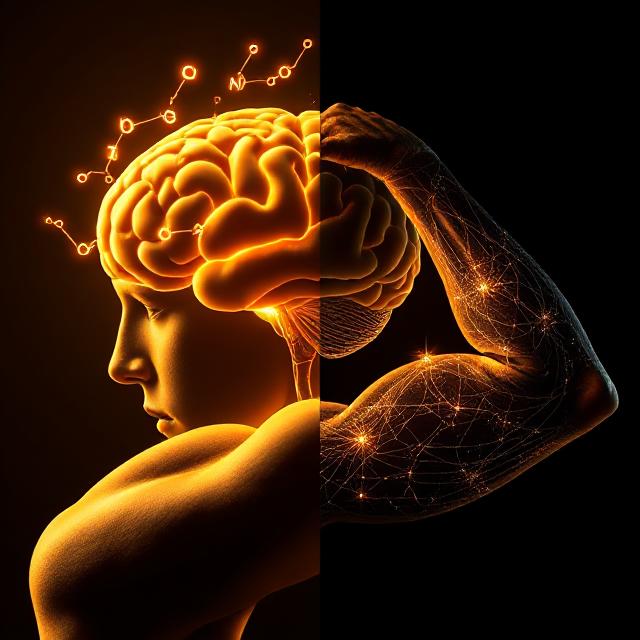
Table of Contents
EAA Supplementation: When and Why to Use Them
Most people focus on hitting daily protein targets. But what if the real key to optimal recovery, brain performance, and metabolic resilience isn’t just protein—but precision? Enter EAA supplementation—targeted, efficient support for critical cellular processes, especially when diet, timing, or stress load make whole-food coverage difficult.
In this guide, we break down the when and why of EAA (essential amino acid) supplementation for adult learners, high performers, fasters, and anyone seeking mental sharpness without the baggage of digestive or caloric overload.
🧬 Why EAA Supplementation?
Essential amino acids (EAAs) are the nine amino acids the body cannot produce on its own. They include:
- Leucine
- Isoleucine
- Valine
- Lysine
- Methionine
- Threonine
- Phenylalanine
- Tryptophan
- Histidine
These amino acids serve as the raw material for everything from neurotransmitters and enzymes to muscle tissue and immune factors. Without them, no amount of protein quantity can compensate.
While full-spectrum EAAs exist in many foods (like eggs, meat, and dairy), supplementation becomes valuable when:
- You’re fasting or eating minimal calories
- You’re plant-based with limited protein variety
- You’re training hard or experiencing stress-induced catabolism
- You need rapid absorption without digestive drag
🎯 When to Use EAA Supplements
1. Morning Fasting + Mental Focus
Fasted states promote autophagy and metabolic flexibility. But cognitive clarity can dip due to low amino acid availability—especially tryptophan and tyrosine, precursors to serotonin and dopamine.
💡 Use: 3–5g EAAs in water, first thing in the morning, for calm mental energy without breaking a fast.
2. Pre-Workout or Intra-Workout Recovery
Resistance training demands amino acid availability for muscle protection and repair. EAAs help initiate protein synthesis without requiring full meals that could bloat or slow you down.
💡 Use: 5–10g EAAs 15–30 min before lifting or during extended cardio.
3. Post-Fast Muscle & Brain Recovery
After a long fast (18+ hours), your body craves precise inputs to rebuild tissue and restore neurotransmitters. Flooding it with a heavy meal can hinder digestion and slow the process.
💡 Use: 5g EAAs + electrolytes to prime recovery before your first real meal.
4. During Study Sessions or Deep Work
Cognitive tasks deplete neurotransmitters. Amino acids like phenylalanine, tryptophan, and tyrosine act as raw material for focus-related chemicals.
💡 Use: Micro-dose EAAs (2–4g) during long mental sessions to support concentration and delay fatigue.
5. Low-Protein Meals or Plant-Based Diets
Even with careful planning, many vegetarian and vegan diets fall short of full EAA coverage. Supplementation fills gaps and promotes better nitrogen balance.
💡 Use: Add 5g EAAs to a smoothie, grain bowl, or plant-based snack to enhance bioavailability.
🧠 EAAs and Cognitive Performance
Certain EAAs directly impact neurotransmitter systems:
- Tryptophan → Serotonin → Mood regulation and sleep
- Phenylalanine → Tyrosine → Dopamine & norepinephrine → Motivation, focus, mental clarity
- Histidine → Histamine → Wakefulness and attention regulation
Because they cross the blood-brain barrier rapidly, EAAs in pure form can support clear thinking and mood stability during fasting, studying, or stress.
Bonus: EAA supplementation maintains cognitive output without spiking blood sugar or insulin.
🏋️ EAAs vs BCAAs: Why Full Spectrum Wins
BCAAs (branched-chain amino acids: leucine, isoleucine, valine) are a subset of EAAs and have been popularized for muscle support. But they lack the other six critical amino acids, meaning they cannot complete protein synthesis alone.
- BCAAs = only partial signals
- EAAs = complete activation and building blocks
🧠 Think of BCAAs as ignition. EAAs are the full engine.
🔬 Scientific Support
- A 2009 Journal of the International Society of Sports Nutrition study found EAAs stimulate muscle protein synthesis more effectively than BCAAs.
- A 2021 review in Nutrients emphasized EAAs’ role in preserving lean mass during calorie restriction.
- Studies on aging populations show EAA supplementation improves muscle maintenance and reduces sarcopenia, even without large protein meals.
🧪 Protocol Suggestions
| Goal | Dose | Timing | Notes |
|---|---|---|---|
| Focused Fasting | 3–5g | Morning | Add minerals for electrolytic balance |
| Mental Focus | 2–4g | Before or during work | Stack with tyrosine for dopamine |
| Muscle Preservation | 5–10g | Pre/intra/post workout | Pair with light carbs if not fasting |
| Vegan Protein Boost | 5g | With meals | Especially with grains or legumes |
| Post-Fast Recovery | 5g | Pre-meal | Avoids digestive shock with heavy meals |
⚠️ When Not to Use EAAs
While EAA supplementation is powerful, it’s not always necessary.
- With full, balanced meals: If you’re eating eggs, fish, or high-quality animal protein at regular intervals, you likely don’t need to supplement.
- Excessive use: High doses may increase nitrogen load and reduce autophagic benefits during prolonged fasting.
- Late-night usage: EAAs may increase alertness in some people, so avoid close to bedtime unless paired with glycine or magnesium.
🧭 Final Thought: Strategic Supplementation Wins
EAA supplementation isn’t a replacement for a nutritious, balanced diet. But when deployed with intention, it becomes a powerful tool for cognitive clarity, muscular recovery, and metabolic resilience—especially during fasting, stress, or dietary restrictions.
Use it to:
- Fill in nutritional gaps
- Support mental endurance
- Enhance fasting benefits without breaking the fast
Don’t just hit protein numbers. Deliver the right signals.
